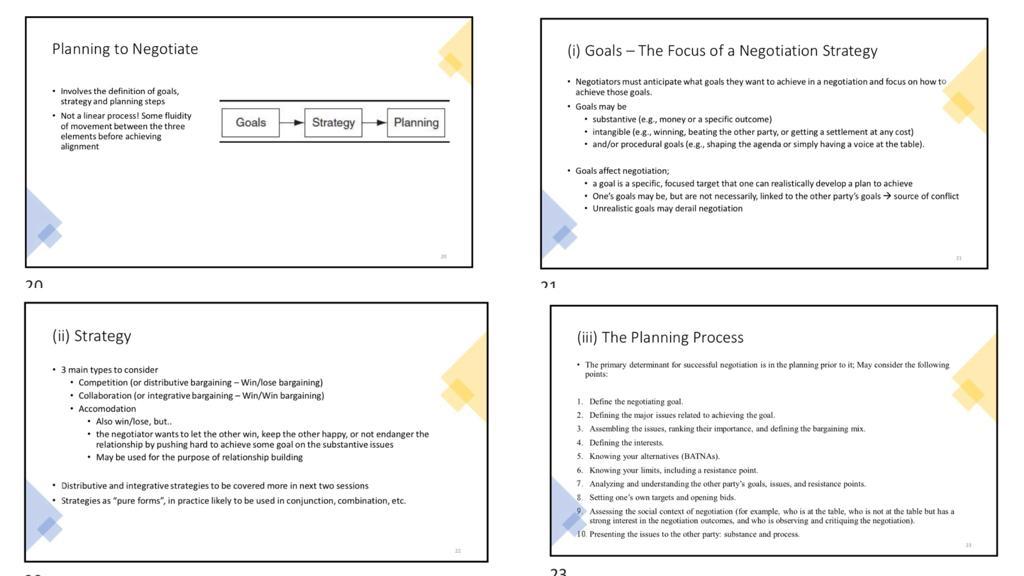Answered step by step
Verified Expert Solution
Question
1 Approved Answer
Using the framework attached negotiate the price of a new corporate vehicle as a representative of your company. 20 Planning to Negotiate Involves the definition
Using the framework attached negotiate the price of a new corporate vehicle as a representative of your company.

20 Planning to Negotiate Involves the definition of goals, strategy and planning steps Not a linear process! Some fluidity of movement between the three elements before achieving alignment (ii) Strategy Goals Strategy Planning 3 main types to consider Competition (or distributive bargaining-Win/lose bargaining) Collaboration (or integrative bargaining-Win/Win bargaining) Accomodation . Also win/lose, but.. the negotiator wants to let the other win, keep the other happy, or not endanger the relationship by pushing hard to achieve some goal on the substantive issues . May be used for the purpose of relationship building Distributive and integrative strategies to be covered more in next two sessions Strategies as "pure forms", in practice likely to be used in conjunction, combination, etc. B 21 23 (i) Goals - The Focus of a Negotiation Strategy Negotiators must anticipate what goals they want to achieve in a negotiation and focus on how to achieve those goals. Goals may be . substantive (e.g., money or a specific outcome) intangible (e.g., winning, beating the other party, or getting a settlement at any cost) and/or procedural goals (e.g., shaping the agenda or simply having a voice at the table). . Goals affect negotiation; a goal is a specific, focused target that one can realistically develop a plan to achieve One's goals may be, but are not necessarily, linked to the other party's goals source of conflict Unrealistic goals may derail negotiation (iii) The Planning Process The primary determinant for successful negotiation is in the planning prior to it; May consider the following 1. Define the negotiating goal 2. Defining the major issues related to achieving the goal. 3. Assembling the issues, ranking their importance, and defining the bargaining mix 4. Defining the interests 5. Knowing your alternatives (BATNAs). 6. Knowing your limits, including a resistance point. 7. Analyzing and understanding the other party's goals, issues, and resistance points 3. Setting one's own targets and opening bids. 9 Assessing the social context of negotiation (for example, who is at the table, who is not at the table but has a strong interest in the negotiation outcomes, and who is observing and critiquing the negotiation). 10. Presenting the issues to the other party: substance and process
Step by Step Solution
There are 3 Steps involved in it
Step: 1
Negotiation Strategy for Corporate Vehicle Purchase i Goals The Focus of a Negotiation Strategy Goals Define the budget and specifications for the new ...
Get Instant Access to Expert-Tailored Solutions
See step-by-step solutions with expert insights and AI powered tools for academic success
Step: 2

Step: 3

Ace Your Homework with AI
Get the answers you need in no time with our AI-driven, step-by-step assistance
Get Started


